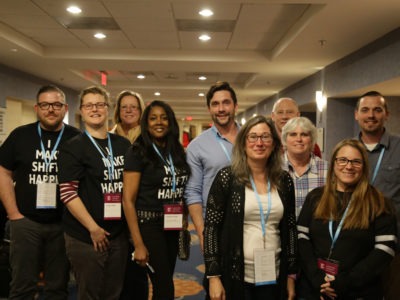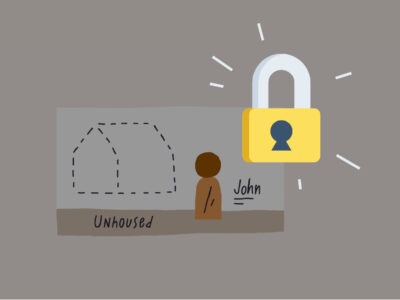Homelessness is solvable. In Built for Zero, 14 communities have proven it, reaching a dynamic milestone for ending homelessness for a population, known as functional zero. So far, 42 communities have achieved a measurable reduction.
When we share this information, it usually prompts a question: but what about large cities?
It’s understandable. To date, the communities that have reached functional zero are small to mid-sized communities. But the exciting news is that large cities are not far behind.
We work with a host of large cities, including six of the 20 largest cities in the country. Many of them have made measurable reductions for a population experiencing homelessness.
What’s considered a large city?
We have defined large cities as:
1) communities that have been designated as a Major City Continuum of Care by HUD or
2) communities where the principal city within the Continuum of Care is designated as a “large” city according to National Center for Education Statistics AND a substantial homeless population is residing within the principal city boundaries (according to the Annual Homeless Assessment Report and by-name data, if available).
What every community needs to end homelessness
The good news is that our experience has demonstrated that the critical features of an operating system designed to end homelessness are the same, regardless of the size of the community:
Challenges for large cities working to solve homelessness
But there are also unique challenges. Three in particular:
1. Complex governance structures.
Homeless response in large metro areas is often subject to cumbersome, hybrid governance structures (e.g. city/county joint powers authorities) that diffuse power and make nimble decision-making difficult. These structures usually start out as a compromise designed to help city and county political leaders work together across a large area. But because they split up the decision-making authority between frequently opposing political factions, the result is more often paralysis.
2. Tight housing markets
Large cities often have higher cost housing markets where federally backed rental vouchers are less competitive. This requires targeted real estate investments to produce more dedicated housing stock.
3. Larger populations experiencing homelessness
Larger, more densely populated cities usually start out with much bigger populations of people experiencing homelessness. It’s natural that it takes them longer to drive to zero. The key thing to look for early on in these communities is whether homelessness is trending in the right direction (downward) over time.

“… Jacksonville is leading the way on ending veteran homelessness.”
— Dawn Gilman, Chief Executive Officer of Changing Homelessness
Proof of possibility in large cities
These challenges are big but not insurmountable. Communities have required more time to design and operationalize systems that can drive toward zero — and to secure the resources to close the housing gaps that often emerge— but they can and do make progress!
Even in the midst of the pandemic, cities like Detroit and Jacksonville, Florida, have driven dramatic reductions in veteran homelessness, for example.
Detroit reduced veteran homelessness by 33% in 2020. A big component of their success? Collaboration.
“Systems work best when they’re not working in silos. And I always say — we’re just smarter together,” said Tom Albanese, a VA Technical Assistance provider working with Detroit.
Dawn Gilman, Chief Executive Officer of Changing Homelessness, is a leader working to end veteran homelessness in Duval County, Florida. This includes Jacksonville, the largest city by area in the continental U.S,
“Homelessness in large cities can appear daunting, confusing, and even overwhelming,” she said. “By focusing on the goal of ending homelessness, looking at real time data to determine where people were and what they needed, and a community wide willingness to work together in new ways, Jacksonville is leading the way on ending veteran homelessness.”







